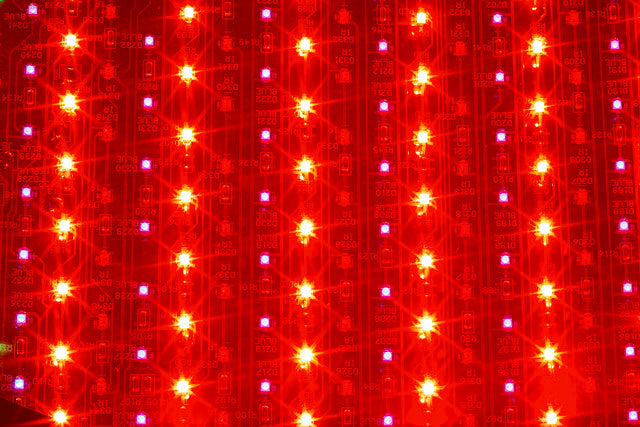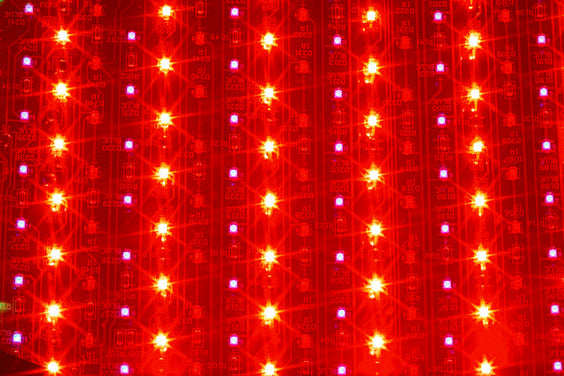Using the correct LED wavelength to improve the skin, Part 3
This article originally appeared in the February 2020 issue of Dermascope Magazine.
In Part 1 of this blog, we discussed the benefits of the various wavelengths and in Part 2, we talked about assessment, diagnosis, and planning. Here in Part 3, we’re going to discuss educating the client and choosing the right device for your practice.
Managing and moderating expectations is a vital element of the consultation and assessment process. The client’s expectations need to be congruent with what the professional is able to deliver. When it comes to treating with LED, a sound understanding of the differing wavelengths, their varying depths of penetration, and the target cells will support the decision as to which wavelength or program will deliver the optimum outcome.
When making a clinical judgment as to which is the most appropriate wavelength to use in the treatment plan, the decision will depend on the intended outcome. Does collagen production need to be increased for skin rejuvenation? Then, the support of the combination of near-infrared with red LED will be needed to achieve a better result.
Is the skin damaged with a disrupted barrier and in need of greater wound healing and repair? Is the use of blue LED sufficient for the management of acne-prone skin or would the combination of blue and red LED aid wound healing, as well as regulate the sebum production, eliminate P.acnes bacteria, and control breakouts?
Would the use of near-infrared in combination with red give an improved outcome with those with severe photo-aged skin? There is a plethora of scientific evidence to support the use of combination wavelengths for faster, better, and more longer-lasting results.
Compliance by the client is crucial to a successful outcome. No matter what the management plan, it needs to be mutually agreeable to both the professional and the client, and be manageable, achievable, and not a financial burden to the client.
Time needs to be set aside to educate and inform the client of the benefits of the treatment, particularly in relation to the use of LED therapy, addressing concerns over risks or any contraindications that may apply.
Choosing the Right Device
LED therapy is proving to have more and more viable applications in the management of skin concerns. However, it must be remembered that not any LED device will do. Research should examine any device and should establish whether there is the scientific (not marketing) evidence to support their device.
FDA-clearance means that the device has been reviewed for safety and efficacy. Ask if the LED device is FDA-cleared for the intended use. For example, a device cleared to treat only acne may not be the best choice if treating aging skin. How versatile is the device? Can it be used on other areas apart from the just the face?
Does it have the correct wavelengths for the target cells? Wavelengths between 830 and 880 nanometers are effective for all aspects of wound healing, inflammatory processes, and skin rejuvenation. A combination of blue (415 to 470 nanometers) and red (630 to 660 nanometers) is effective for the management of active inflammatory acne and skin rejuvenation.
If the wavelength is incorrect, optimum energy absorption will not occur at the target cells and, therefore, no photochemical reaction will occur. The ability to place the device in close proximity to the skin improves energy absorption.
This, along with adequate treatment times, is an important factor in attaining optimal results. Cells need a certain amount of time in order to absorb enough of the emitted energy to achieve optimum results. The best LED devices recommend 20- to 30-minute treatment durations.
LED therapy is safe, effective, and a pain-free treatment with scientifically proven benefits in the management of the array of skin concerns and disorders that present in clients.
References
1. Jagdeo, J., E. Austin, A. Mamalis, C. Wong, D. Ho, and D.M. Siegel. "Light emitting diodes in dermatology: A systematic review of randomized controlled trials." Lasers in Surgery and Medicine 50, no. 6 (2018): 613-628.2. Opel, D.R., E. Hagstrom, A.K. Pace, K. Sisto, S.A. Hirano-Ali, S. Desai, and J. Swain. "Light emitting diodes: A brief review and clinical experience." The Journal of Clinic and Aesthetic Dermatology 8, no. 6 (2015): 36-44.
3. Avci, P. A Gupta, M. Sadasivam, D. Vecchio, Z. Pam, N. Pam, and M.R. Hamblin. "Low-level laser (light) therapy (LLLT) in skin: stimulating, healing, restoring." Seminars in Cutaneous Medicine and Surgery 32 no. 1 (2013): 41-52.
4. Sorbellini, E., M. rucco, and F. Rinaldi. "Photodynamic and photobiological effects of light emitting diode (LED) therapy in dermatological disease: an update." Lasers in Medical Science 33, no. 7 (2018) 1431-1439.





